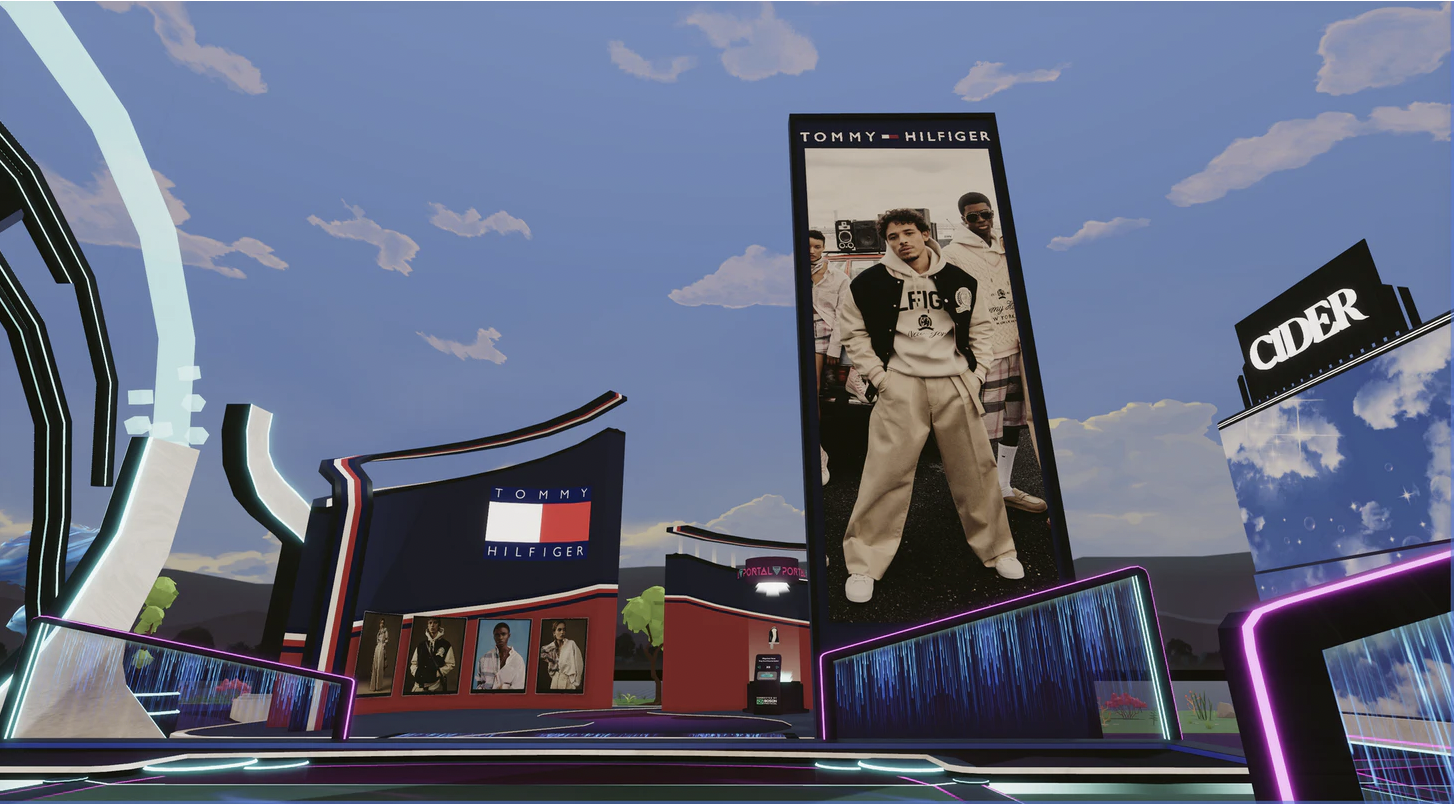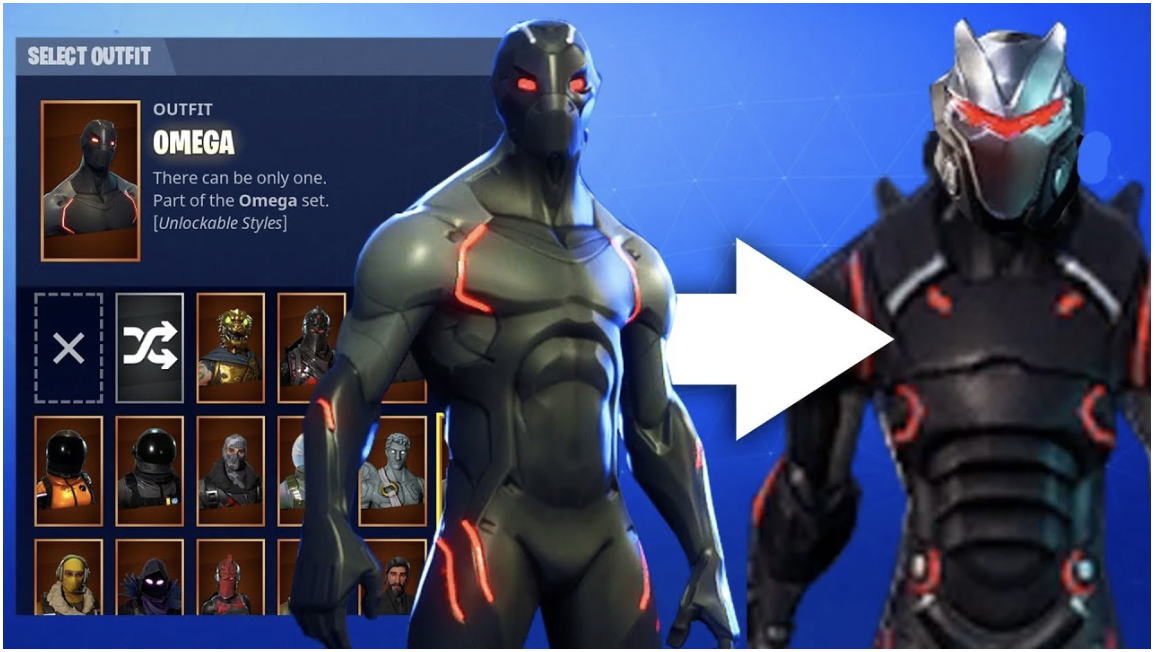⛰️The Fashion Frontier
Fashion is inextricably linked to our need to belong; using clothes as a way to express ourselves and identify with different groups, traditions, and cultures.
Fashion is the story of who we are, and who we want to be.
And forever, fashion has been shaped by the same driving forces; entertainment, music, politics, technology, sports - the elemental blocks of culture itself.
But what happens when the speed of culture shifts?
What happens when those same elements begin to change and evolve at increasingly fast rates? When new ways of listening to music, when new ways of viewing shows, when new methods of rising to fame all emerge and evolve?
And what happens when not only are these elements rapidly changing but the way in which we are exposed to them also rapidly changes?
When social media can take a moment in culture and magnify it nearly instantly to become visible to the entire world, repeatedly exposing us to that moment? Remember that Oscars moment a few days ago?
What do we see with fashion as a result?
What we see is a culture in which fashion is responding with equal and opposite reactions.
Without a doubt, fashion trends are moving at a faster rate today than they ever have before. Thanks to platforms like TikTok, where the world is empowered and incentivized to create content, we can see how one show like Euphoria can influence fashion trends, and how influencers across platforms can magnify those trends in their own unique ways instantly to their own follower base. And thanks to the rise of technologies like social commerce, we can purchase those new trending clothes in a matter of seconds without ever leaving that same platform.
With influencers being paid to promote a piece in a 10-second video, and never wear it again, trends come and go in months or even weeks.
And from this cycle, we see the rise of fast fashion: a method of production that allows brands like SHEIN, Zara, and H&M to enable the followers of these trends to quickly and affordably fit in and belong to the trends of the moment.
And yet as these trends evolve faster and faster, we see a generational response that bears surface-level similarities to the self-expression narrative:
It feels almost as if this overwhelming generational desire for self-expression is more of a hopeless one; a last-resort option.
It is commonly stated about Gen Z that we “love self-expression”, we’re the “self-expressive generation”. But has anyone ever stopped and asked why? The desire for self-expression in fashion directly contradicts Maslow’s hierarchy of needs: the human desire to belong.
So why does Gen Z want self-expression?
On one side, we see this as a backlash against the trend cycle; a push for self-expression enabled and fueled by second-hand shopping and the emergence of platforms like Depop and Poshmark to facilitate our a) affordable and b) individualistic desires.
On the other, we see the world’s biggest game of duck-duck-goose. Where young consumers are forced into consuming faster and faster, just to feel like they fit in, to feel like they belong; which is certainly understandable after that feeling of “belonging” has nearly evaporated over the 2+ year span since COVID hit, and we lost every element of our high school and college social lives. “But what about social media and technology connecting people?” Clearly, that’s not helping to bring us together; Gen Z is the loneliest generation, with more people feeling isolated in today’s world than ever before.
“Modern progress has brought unprecedented advances that make it easier for us technically to connect, but often these advances create unforeseen challenges that make us feel more alone and disconnected.
- Dr. Vivek Murthy, United States Surgeon General and author of Together: The Healing Power of Human Connection in a Sometimes Lonely World
Interpreting the Gen Z fashion trends of today
And yet even within this game of fashion catch-up, here are the top trends of the past year:
Gorpcore, normcore, Y2K, Indie Sleaze, dark academic, collegecore, ivy style, vintage, preppy, old-money aesthetic, e-girl/e-boy, coconut girl, avant basic, zara chic.
See a pattern? There is an overwhelmingly strong desire to connect with the past; what seems like a backlash against the always fast-approaching future. Y2K, (other trends here), athleisure, etc; youth fashion trends of the last few years have been dominated by these nostalgic eras. Today, nostalgia dominates our generational aesthetic. To pull from this recent piece by Megan Cullen of BBH on Gen Z and Nostalgia:
PEAK NOSTALGIA: WHY GEN Z ARE BECOMING FUTUREPHOBIC: from BBH_Labs
“If you look to the trends that have defined Gen Z and young Millennial style in the last couple of years, you’d be hard-pushed to find anything that feels truly new.
First – in early 2020 - it was Y2K: low rise denim miniskirts, bedazzled logos, and wired headphones all made a comeback, along with a resurgence in the music and TV shows of the early noughties.
Then we heard ‘Indie Sleaze’ was coming back. I didn’t know what it was either, but apparently, if you just imagine walking into an American Apparel circa 2008, you’ll have a pretty good picture of it.
And now - according to TikTok - it’s all about the Twee/Tumblr aesthetic of 2014, a time that doesn’t rightly feel long enough ago to elicit that nostalgic longing for things past.”
Fashion gives us yet another lens through which to understand why nostalgia is such a powerful factor. As society moves forward, our fashion tastes look back. Cullen of BBH calls this nostalgic force futurephobia, and it’s hard to disagree with that assessment.
Because if we zoom out of the fashion lens, we observe a generation surrounded at all times by noise. We have grown up with school shootings, the senseless murder of black people in the streets, acts of terror in our backyards, the climate burning in front of us, with the coronavirus pandemic taking away our education, our friends, and our social lives at their most pivotal points, with a world war on the brink, with the noise that all generations have had; the heartbreaks, the deaths of family members, the divorces and the lost friends. The key difference? We’re exposed to all of this over and over and over again on social media.
So why are we nostalgic? And why are we seeing it dominate fashion? As Cullen writes,
“When you step back and take stock of the options available to Gen Z about the type of future they want to subscribe to, they are not only limited, but profoundly uninspiring. It’s either:
Embark on a grueling losing battle with pandemics, climate change, and social and political inequality;
Give up on earth in pursuit of limitless growth in new worlds, while lining the pockets of billionaires; or
Put your fingers in your ears, get dressed up in butterfly clips and lowrise jeans, and listen to Britney
I know which one sounds most enjoyable to me.”
Culture will continue to move at faster and faster speeds, reaching nearly unstoppable, unsustainable rates. The question is: what happens when we can’t sustain this rate of change anymore? Will we keep our fingers in our ears, keep dressing from the past and keep watching Euphoria?
Generation Z is acutely aware of fast fashion’s environmental impact (yet continues to buy it...), the trends of today are teleporting us to previous decades to escape from the future ahead, and as all of this happens, we are introduced to a completely new, game-changing variable. Feel overwhelmed yet? Too bad.
In comes the Metaverse…
For years, Generation Z has grown up with virtual worlds and virtual fashion. Sims, Fortnite, Minecraft, Roblox, we’ve been wearing these virtual garments for most of our young gaming lives. But only recently have we seen the somewhat forced introduction of one critical element: brands.
The opportunity for marketers and advertisers in this virtual world is abundant. But right now, the only question we seem to be asking is “what kind of monetization potential is there?”.
As the metaverse has opened up this world of fiscal opportunities to brands, few if any executives have taken a moment to ask the question; what will happen when we force an entire generation to also shape and maintain their virtual identities through fashion?
The metaverse and meritocracy
The promise of the metaverse is a world where everyone enters as equal; where we can freely express who we are and who we want to be, because there is no distinguishing black from white, gay from straight, or one gender from another.
But we do not enter as socioeconomic equals. No matter what our avatar looks like, we are limited by the same factor that limits our physical worlds. Money.
For nearly all of our young gaming years, finances were not as relevant. Virtual identities and fashion were most closely related to time spent. Spend more time playing a game, racking up points and in-game currency, and you had a cooler skin in Fortnite, a better weapon in CoD, a nicer Webkinz house. Virtual identities were created by what is almost a true meritocracy; a better-looking avatar = a better player/more time invested.
But when we introduced brands, everything changed.
Remember high school, where you would be sitting in a classroom and looking around to see what your peers are wearing? That still happens today. But what happens when after this moment, we pull out our phones and see the branded avatars of those same peers also dressed in unique and extravagant brands, accessed only because there are some who can afford those goods; will we not make that same comparison to our own self, virtual or not?
The introduction of fashion brands demands that an entire generation will be required to spend money in the physical and virtual worlds. Identity has never needed to be split, shaped, and managed in such a way before.
Is this what we actually want? What will happen when our looks and presence matter equally as much in a virtual world? Will the pressures of social media and the constant comparison that it causes us to make with others suddenly disappear?
And yet the advertising world calls this the opportunity for further self-expression, allowing youth to create new and separate identities through virtual garments. A scapegoat, (poorly) hiding their true intention…
These quotes come from the McKinsey and Business of Fashion, State of Fashion 2022 report from the EVP and CMO of a certain luxury brand:
“Then there are more and more second worlds where you can express yourself. There is probably an underestimation of the value being attached to individuals who want to express themselves in a virtual world with a virtual product, [through] a virtual persona.”
“I won’t tell you how we structured our different deals [but] what I can tell you is that we have proven to ourselves through these collaborations that the virtual world can create a very significant new revenue stream.”
“We know that people are willing to pay good money for NFTs, for digital collectibles, and to have a second life in the metaverse. So the revenue potential is absolutely there.”
Robert Triefus Executive Vice President and Chief Marketing Officer, Gucci
Read that again, and tell me what is the goal of the EVP and CMO of Gucci? Is it helping to shape the development of a generation to build our identities? Even the first quote seems at a cursory glance a stab at the self-expression scapegoat claim; but with a second look, single out some keywords like “value” and “product” and you’ll see the meaning behind it.
Yet regardless of youth considerations, this is the direction being shaped by the advertising world.
Where do we go from here?
The metaverse holds great promise - a chance to immerse ourselves in a world outside of the physical, to enter as equals, and to experience life in new and meaningful ways. It offers an escape from the horrors of the physical world, an immersion in foreign feelings and inconsequential actions.
But the role fashion plays in this world must be thoroughly understood not for its financial impact, but for its impact on human development. Take a serious look at the rates of depression, suicide, and anxiety within an entire generation; we grew up with the unstudied, uninhibited effects of social media on our young and developing minds.
Before we make big profit-focused leaps into branded virtual worlds, let’s take a minute to ask; are we doing this to allow Gen Z’ers/Alpha to “$elf-expre$$”, or are we doing this to provide young people the chance to be who they want to be and do what they want to do?
What should fashion in the metaverse look like?
Fashion in the metaverse should return to its meritocratic roots. It should not be a requirement to purchase a Gucci outfit or Converse shoes to maintain your sense of belonging. These should be earned through experience.
Why?
The metaverse offers brands an unlimited, uninhibited playground for imagination and creativity. We see companies like Vans creating their own worlds for people to experience and engage with the brand in new and unique ways.
And this is where generational loyalty is shaped; through experience, not exclusivity.
Incentivize people to spend time with your branded world, hang out and experience life in new and meaningful ways, forming connections with people from across the world in the same branded environment. That is what makes the Vans World so compelling.
Those people become your brand’s biggest ambassadors. They are the ones sharing your content on social, promoting UGC, and in our physical world, they’re the ones repping your brand’s gear like nobody’s business.
Look - I agree, the monetization potential in these virtual worlds is not insignificant. And to be honest, it’s likely Gen Z, if you offer and promote it, will buy your virtual clothing. But is that going to make Gen Z more likely to buy your clothes IRL? To rep your brand and share it with friends?
What’s more likely is that short-term gain will not translate into long-term loyalty, and you’ll be left fighting for scraps as young consumers flock to experiences that add value to their lives.








